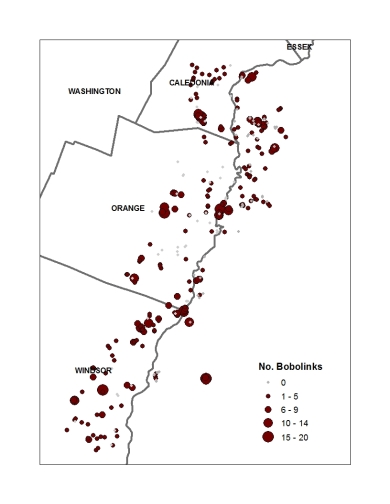“Hotspots” are where we found greater concentrations of grassland birds. Savannah Sparrows were found at most sites we surveyed, whereas Bobolinks were absent in some places, clustered in others, and their numbers varied. Eastern Meadowlarks were found at only a handful of sites, and we usually detected just one or two individuals per site. They were once fairly common in the Upper Valley’s open lands, and like other grassland bird species in parts of the Northeast, may soon be a virtual relic on the landscape, breeding only at airports that manage for grassland birds. In the Upper Valley, the local airport was the only site to support several breeding individuals of Eastern Meadowlark.
A survey mailed to 310 landowners and farmers (one-third responded) confirmed that 40-50% of landowners and farmers are cutting hay earlier and more frequently than 10-30 years ago. About a third of farmers were likely or somewhat likely to adopt bird-friendly management, while landowners leasing their fields had more flexibility, with 60% likely to manage differently. There were only 11 non-farmer respondents, but all of them exhibited an interest in benefiting grassland birds. Despite familiarity with grassland birds reported by over half of the respondents, most were unaware of programs that provide financial incentives to delay haying, and 70% requested more information about how to manage for grassland birds.
We provided calendars of grassland bird nesting, a brochure to guide landowners, and a summary of incentive programs to the 70% of respondents who requested more information and to the landowners we met during field work.

